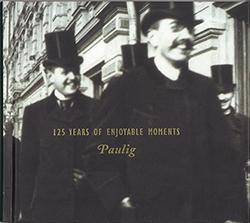
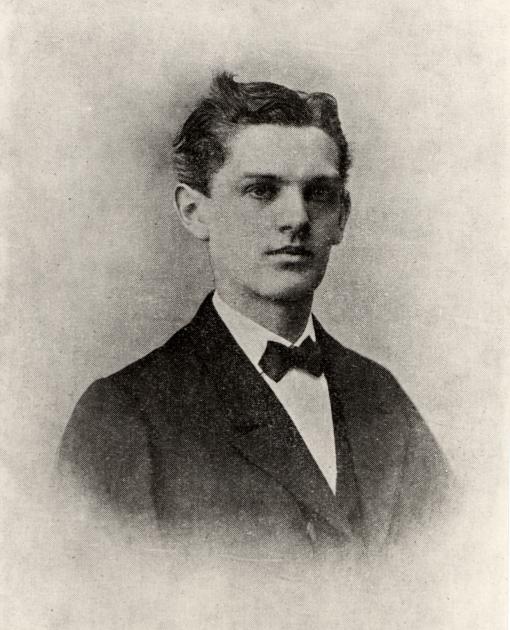
1876
Gustav Paulig founded a wholesale business for imported groceries and marries Bertha Bohnhof
The Grand Duchy of Finland was undergoing great changes, but it offered plenty of opportunities for a foreign businessman.
Gustav founded a wholesale business for imported groceries. The office was at Fabianinkatu 10. Customers calling at the polite 26-year-old dealer’s shop found plenty to choose from: green coffee, spices, loaf sugar, rice, raisins, dried fruit, oils, port and cognac. In his first year in business, Gustav Paulig imported and sold 303,000 kilos of green coffee, which was seven per cent of Finland’s total for coffee imports at that time.
In Helsinki Gustav met the attractive Bertha Bohnhof, whose father had a nursery and garden at Arkadianmäki along the edge of town, where the Parliament Building stands today. The couple was married in December 1876 and settled down in a house on Bohnhof ’s property.
Ten years later Gustav rented eight acres of land between the Läntinen Viertotie street and the Humallahti district and bought a villa on the site. After some repairs it made a beautiful home for the Pauligs, who were blessed with three sons and four daughters.
1900s at the beginning of the century, the vast majority of food was still sold in the form of uncompressed raw materials
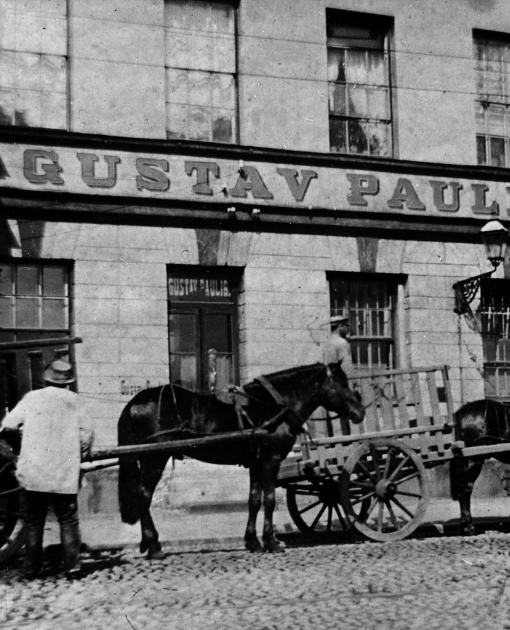
1904
“What if I roasted my own beans?” Paulig’s first roasting starts
Gustav Paulig supplied his customers with green coffee in sacks and bags. While weighing out the unroasted coffee beans he thought to himself how he could ease the work. Roasting and grinding coffee at home had its difficulties. A large roasting pan could hold only a sackful or even two.
“When you start compromising on quality, you might as well shut the factory gates”
GUSTAV PAULIG
Gustav began to roast small batches of green coffee in a rotating roasting drum heated by a brazier. The ‘roastery’ was in Victor Ek’s warehouse building close to the Katajanokka bridge. Shopkeepers in Ostrobothnia were very demanding and even expected their coffee beans to be polished to a shine. At first Gustav sold his ready-roasted beans loose, later putting them in five-kilo cans. They were adorned with Paulig’s P-trademark, which Gustav himself had drawn in the 1880s. The Finnish Industry Board approved the registration of Gustav Paulig’s trademark on 12 January 1905.
1900 – Paulig’s drivers with horses Oiva and Sampo on Helsinki’s south shore.
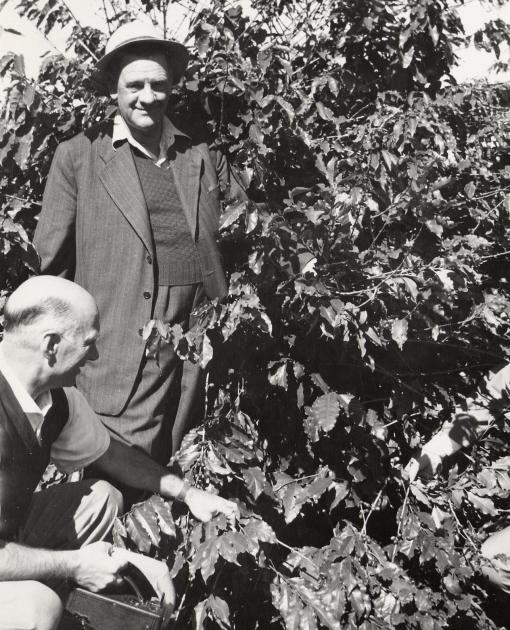
1911
Paulig moves into own premises in the Katajanokka district of Helsinki
A seven-storey commercial building designed by a friend of Gustav Paulig, the architect Waldemar Aspelin, was completed in 1911 and provided the firm with office premises as well as facilities for the roasting house and warehouse. The delicious scent of coffee, tea and spices spread far and wide.
A nationwide sales network promoted the spread of Paulig products throughout the country. The first regional office was opened in Tampere in 1903. The network was expanded to cover the whole of Finland in the 1930s.
1919 Eduard Paulig, the son of Bertha and Gustav served as the company's managing director from 1919 until 1947.
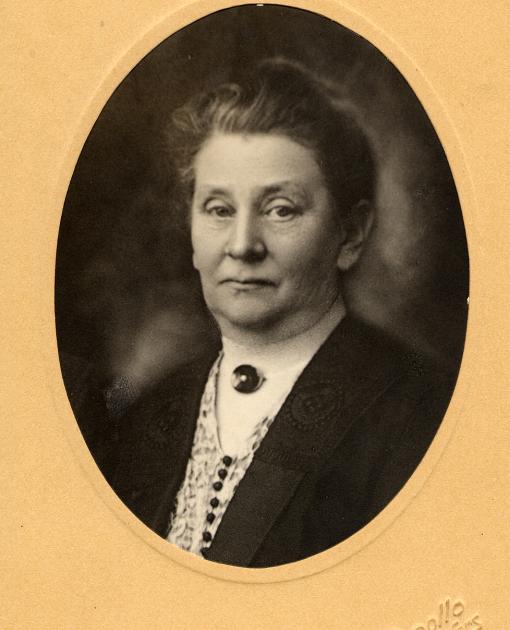
1907
Bertha Paulig to run the business
The energetic Bertha Paulig was her husband’s confidante in business as well as family matters. When Gustav Paulig died in 1907, she was undaunted by her great responsibility. She bought the growing company a plot of land in Katajanokka of Helsinki, on the corner of Satamakatu and Laivastokatu.
Coffee parties became a popular way to socialise in the town. The coffee table was rounded out with sandwiches, fruit and candies. Rules of etiquette became established: cooling one’s coffee or tea by blowing on it was definitely not a done thing to do.
In 1909 Bertha Paulig carried out a significant take-over. She bought three coffee shops and popular cafés owned by Danish-born Julius Nissen, who had drifted into financial difficulties. The Nissen establishments naturally sold Paulig coffee. The chain later grew to encompass 25 cafés and a bakery.
Tea became part of the Paulig range in 1910. At first it was imported from Russia, which was the source of the Finnish tea tradition. A wind of change was blowing through the world tea trade, however, with flavours from Ceylon, India, Indonesia and Japan. Paulig began to buy tea varieties from the Orient.
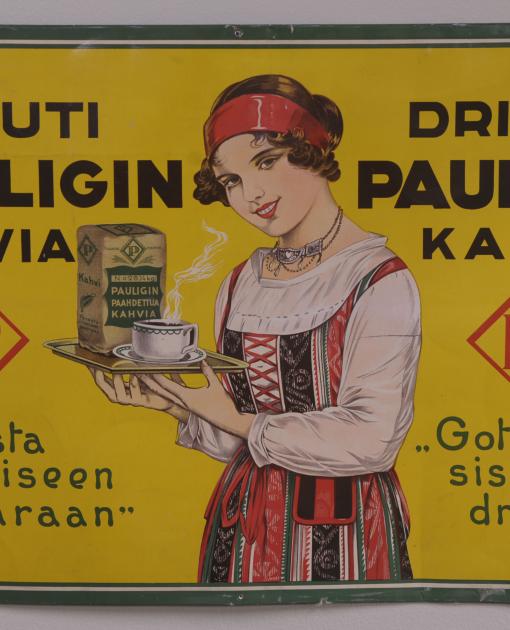
1920
The beginning of the Paula story
As a young bachelor in his first summers in Finland during the 1870s, Gustav Paulig had been attracted to the beautiful national dress of the Sääksmäki style – and possibly to its wearer as well. The romance is not known to have gone beyond a passing fancy, but it made a significant mark on the history of marketing in Finland.
A sketch of a beautiful girl in Art Nouveau style began to appear on Paulig’s 10-kilo coffee packages for the first time in 1904. When the first trade fairs in Finland began to be held, in 1920, young women in national dress from Sääksmäki served coffee at the Paulig stand and other Paulig products to visitors at the fair. A sketch of a girl known as “Paula” wearing the Sääksmäki national dress appeared on Paulig’s coffee packages and posters in 1926. Paulig’s slogan then was:
“The best to the last drop”

1924
Paulig starts to deliver coffee in smaller consumer packages
At first, Paulig supplied coffee to shops in five-kilo packages but in 1924, the company became the first to deliver in smaller consumer packages. They became a hit and soon Paulig was also providing ready-ground spices and blended teas in company packages.
In 1929, Paulig launched its first coffee brands – the Juhla and Presidentti blends, which were the forerunners of today´s top brands Juhla Mokka and Presidentti. Two years later, ready-ground coffee appeared on the shop shelves. At the same time, the date was printed on the coffee packages – an innovation not seen before anywhere in Europe.
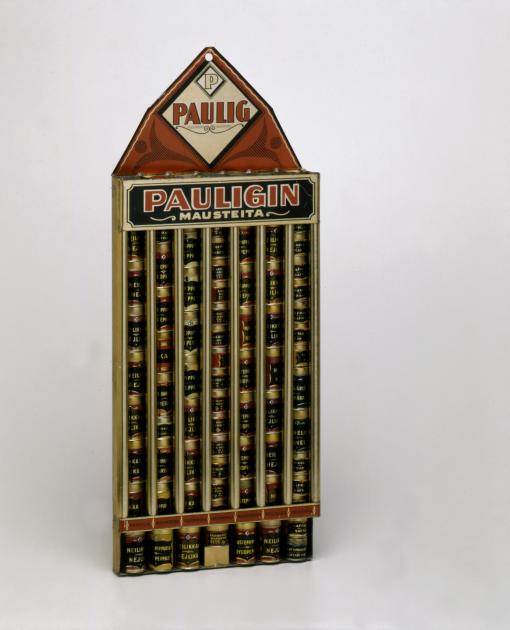
1929
Paulig seasonings: ‘Strongest – tastiest’
When people bought seasonings, the shopkeeper used to roll them up in a paper cone. The flavours evaporated and the seasonings had to be transferred into storage jars at home. Would the customers be pleased at being able to get their seasonings in a handy shaker-top jar? The first Paulig seasoning consumer packages hit the shops in 1929.
“It’s easy for the shopkeeper to tell the difference because of the clear names and also because the cans are different colours, each of which will be a welcome addition and ornament for the buyer’s dinner table," declared the Paulig advertisement.

1930
A pioneer of brand marketing
In 1931 a miracle took place in a poor village in Canada: two months before the birth was due, a young mother had five babies. All five of the Dionne daughters survived and became famous throughout the world. The news spreads to Finland and gave Paulig’s advertising department a brilliant idea. We had five brands – why not call them the Paulig quintuplets?
The five most popular coffee blends were given names and characterisations: the fine and full-flavoured Juhla blend, Presidentti blend for the sophisticated palate, the exotic Colombia blend, the full-bodied and inexpensive Huomio blend, and the low-priced Talous blend. Newspaper advertisements showed the coffee packages in the form of baby girls:
“We are the famous Paulig quintuplets!”
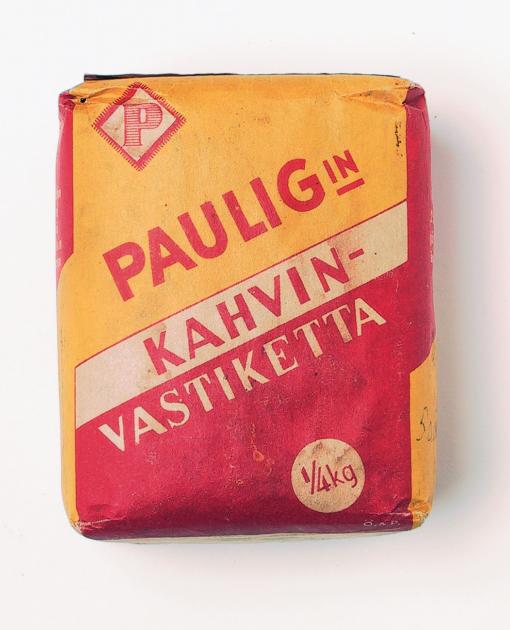
1941
Finland’s years of crisis. Paulig made coffee substitute and the nation lived by ration cards
When the Winter War broke out in autumn 1939 food rationing was introduced. The nation lived by ration cards. Coffee was confiscated at the end of October, before hostilities broke out. Private people were allowed to possess no more than one kilo of coffee. At first Paulig made a substitute containing a quarter or more real coffee. Before long that was amended to a maximum of a quarter. For some while the government collected tax revenue by selling ‘tax coffee’ packed in 250-gram bags. Tax was levied at 40 marks per kilo. The production of tax coffee was banned in early summer 1940. The last time coffee was distributed was in December 1941. After then Paulig began to make a substitute of rye and barley containing no real coffee at all.
“We have the best employees”
Gustav Paulig’s son Eduard Paulig was well aware of the value of his staff. For the five years of war, he paid full wages to all his employees who were on military service. Every Paulig employee received a gift box at Christmas, Easter and Midsummer. ‘Paulig’s boys’ at the front waited for these parcels with particular eagerness: they might contain the longed-for coffee.
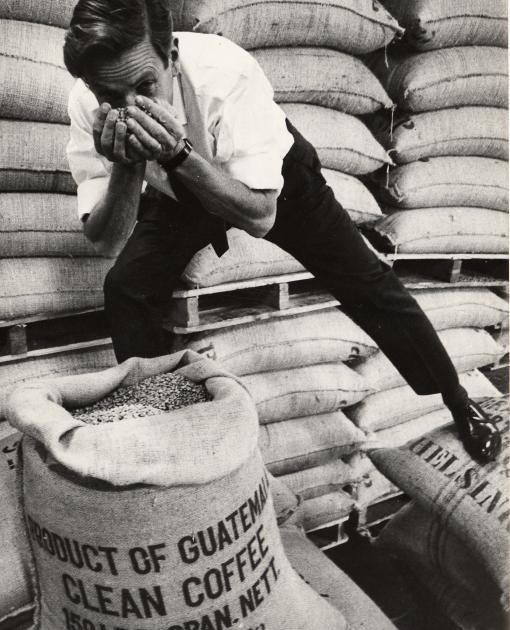
1946
Let the good times roll! Coffee is back!
The first post-war cargo of coffee left Brazil for Finland in January 1946. The press followed the progress of the ship, the Herakles, in minute detail. When the Herakles berthed in Turku harbour on 24 February, a huge crowd had turned out to welcome her. Old ladies stretched out their arms between the ranks of policemen and stroked the sacks of coffee with joy. The cargo hold yielded 2,500 tonnes of green coffee and a stowaway named Antonio de Silva Lima, whom Eduard Paulig gave a job in the roastery. Stringent rationing was only ended for coffee on 1 March 1954. Gradually, Finnish kitchens filled up with the wonderful scent of real coffee instead of bitter substitutes.
1947 The third generation of the Paulig family company takes the helm as Eduard’s elder son Henrik becomes the head of the company.
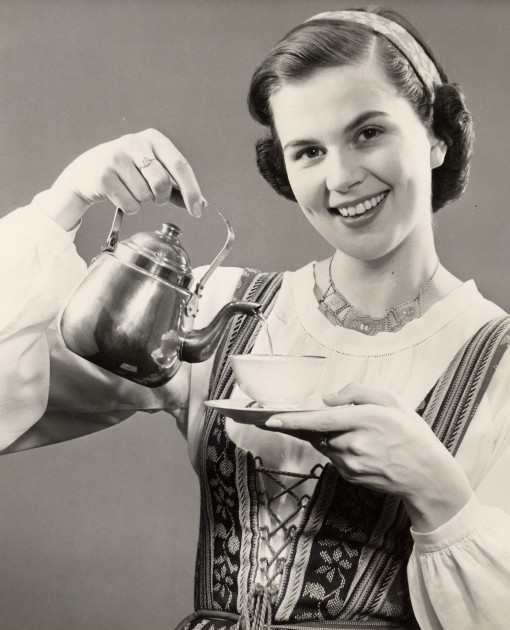
1950
The first ‘real’ Paula Girl, Coffee Ambassador, was chosen
Her picture appeared on the Paula blend coffee packages in 1955. Over the years, Paula became one of the best-known PR-persons in Finnish advertising.
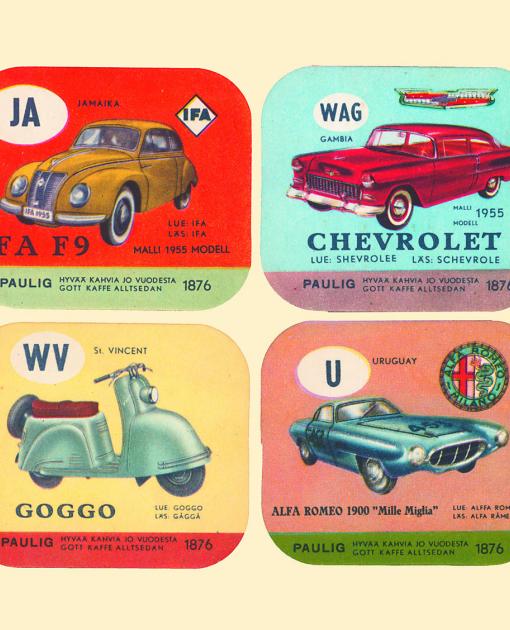
1953
Collector craze sets in, buy more coffee mama!
Paulig used rigid cardboard to reinforce its paper coffee packages and provide an airtight, hygienic seal. In 1953 Paulig began to print this cardboard with pictures of cars and other motor vehicles. Until then children and young people had collected glossy pictures and stamps, matchbox labels and cigar bands. The car cards started a new craze. The coffee packets had a total of 216 collectable pictures, which could be stuck in an album obtainable from Paulig. Children began to await the next purchase of coffee eagerly.
The car card collection boom saw considerable growth in Paulig’s market share. Cards were traded at least as eagerly as real cars. When Paulig’s warehouse in Turku was broken into, the police could only note than no coffee or valuables had been stolen – but the thieves took the car cards from coffee packets!
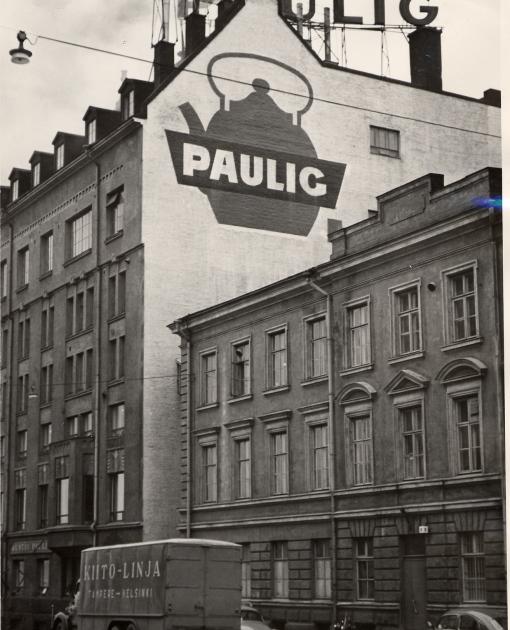
1960
The first vacuum packs and two-gram teabags are introduced!
Paulig began to pack coffee in vacuum packs in 1960. Space research in America resulted in the invention of the flavour-saving plastic in the inner bag. Two-gram teabags, packed by Paulig, hit the market in 1958. Paulig was the only producer of teabags in the country.
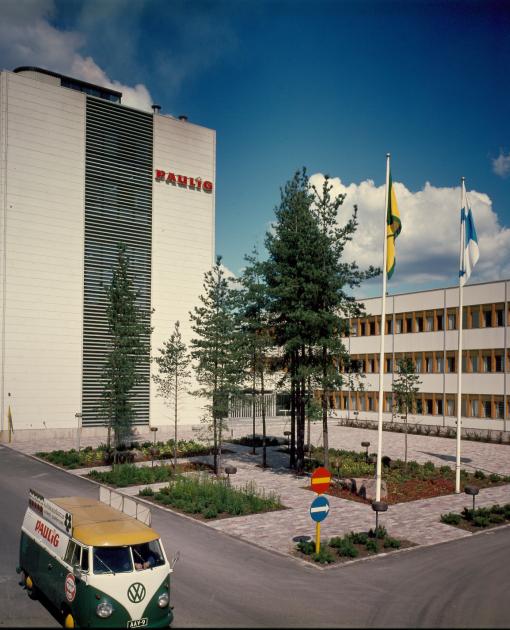
1968
The new modern facilities in Vuosaari, guess who was present at the opening ceremony?
The old business premises in the Katajanokka district of Helsinki were getting cramped. The Paulig roastery and packaging plant moved into new, modern facilities in Vuosaari in 1968. The President of Finland, Urho Kekkonen, was present at the opening ceremony.
Since the inauguration, every package of Paulig coffee has borne a picture of a golden cup. It immediately became a symbol of the finest coffee pleasures the world can offer.
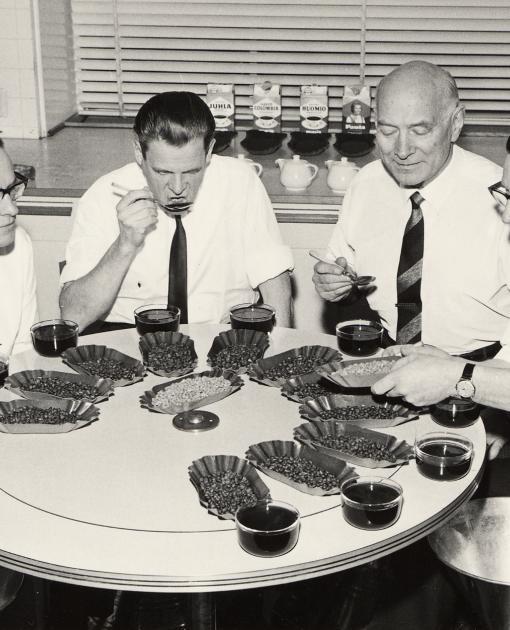
1970
Advice and ideas from the Paula Consumer Service
Paulig started its consumer advisory section, the Paula Consumer Service, in 1971. This was inspired by the American Betty Crocker Consumer Service that Henrik Paulig had come across on his business trips abroad. The Paula Consumer Service’s recipe booklets and information evenings provided new ideas and delicious suggestions to enrich the palette of flavours available to Finns and to improve the cuisine.
The ‘real’ Paula Girl has served refreshing coffee from her copper pan for more than 50 years. The third Paula, Anja Mustamäki, held the post 1962-69.
Grand Flavour Council ensuring the quality. Coffee is tasted eight times on its way from the bean to the cup. In the picture Paulig’s Grand Flavour Council samples the quality in the mid-1960s: Börje Uunila (left), Henrik Paulig, Gunnar Winqvist and Kurt Richter.
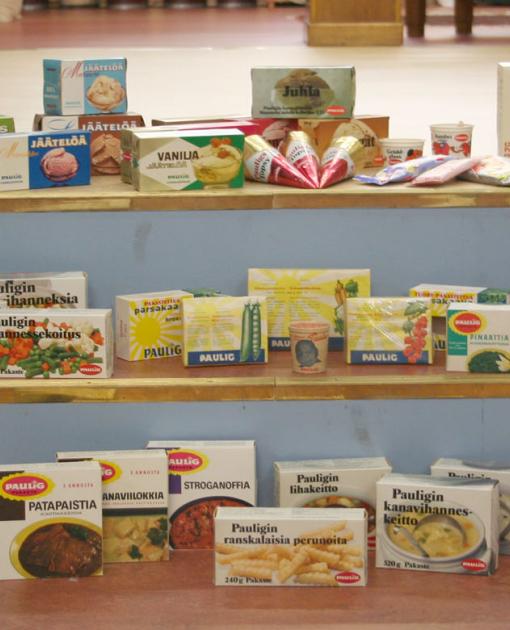
1980
Less salt, more seasonings
The use of seasonings, especially herbs, became more varied. Seasoning was no longer just a question of salt and pepper in Finland. It was convenient and flavoursome to substitute Paulig seasonings for salt.
Pizza becomes everyday food
A clear split took place between meals during the week and at weekends. Everyday food had to be table-ready with the minimum of preparation. Pizza almost became the new national dish of the Finns. Mealtimes had to be fitted in around the children’s hobbies. Weekends were the time for trying out new recipes, cooking together and gathering at the table with friends and family.
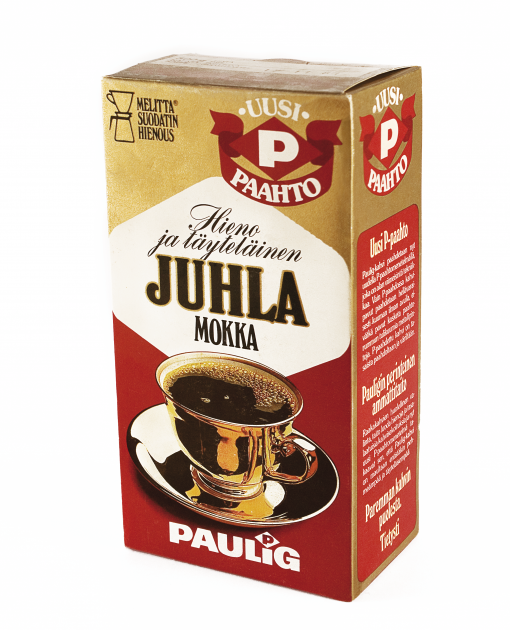
1981
Gentle P-roast and new packaging
From 1981 onwards, Paulig’s brand coffees were roasted with the new P-roast technique, which heated the beans with hot air. The three cornerstones of Paulig’s coffee quality were the careful choice of green coffee, the skillful creation of excellent and consistent blends, and the gentle P-roast method. Paulig’s bean coffees and speciality coffees were supplied wrapped in a new valve pack, which prevented air from getting in.
1986 Bertel Paulig takes over as Paulig’s chief executive.
1987 The strategic choice: coffee and seasonings.
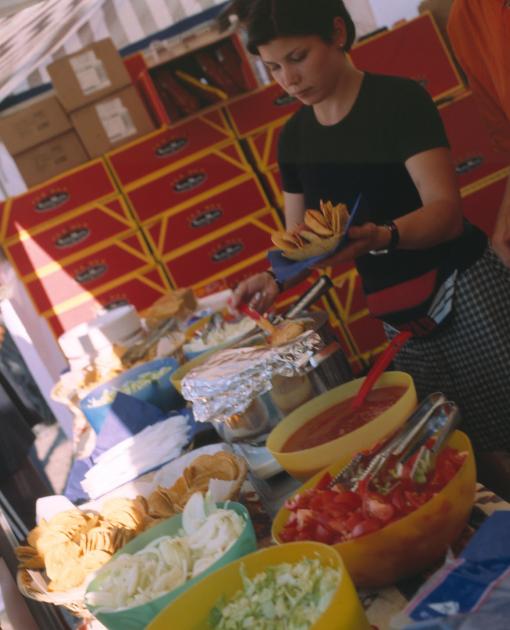
1990
Paulig meets Santa Maria
In the early 1990s, Paulig combined its strength with that of Nordfalks AB in Sweden and Danske Krydderier A/S in Denmark to form the Nordic Spice Alliance. Paulig’s seasonings sailed to the tables under the Santa Maria flag. The partnership gave competitive internationalisation a boost. Santa Maria voyaged to the kitchens of the Baltic countries, Russia and continental Europe in addition to the Nordic region.
The new flavours and modern products attracted the interest of chefs and international café trends established a foothold in Finland. Santa Maria Tex Mex and Spicy World put new, exotic flavours on the dinner table. In 2010 Santa Maria officially becomes a part of Paulig Group.

Setting sails for new horizons – building for internationalisation
In the 1990’s Paulig builds for internationalisation. In 1992 the company starts its business in St. Petersburg in Russia. In Estonia Paulig’s own roastery and seasonings plant were completed in Saue, Tallinn, in 1993. Paulig was once again doing business in Estonia after a gap of over 50 years.
In 1998 Paulig expands the flavouring business to Industrial Flavouring by purchasing Lihel Ltd. Today Lihel and Nordfalks belong to the international Industrial Flavouring business area.
In 2000 a one-fifth interest was acquired in the German seasonings company Fuchs Group. This holding gains Paulig and its Scandinavia-wide Spice Alliance a bridgehead in continental Europe.
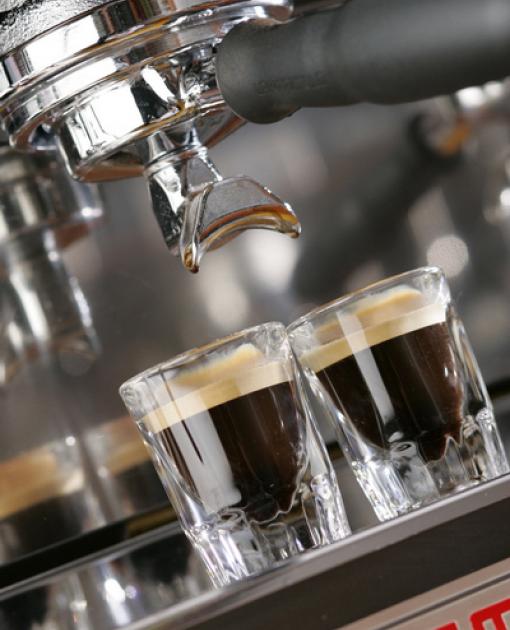
1999
International coffee house trends arrive
To mark the new millennium, Paulig also introduced the Finnish people to a new coffee industry professional: the barista. The Italian word barista initially described a bartender who could prepare espresso as well. Today this title is broader – a good barista is the soul of the café.

2010
The roastery in Vuosaari, Finland built
A site for a new roastery in the business park in Helsinki´s new seaport was purchased in January 2006. That autumn, the final decisions on significant investments for the company were taken, and the topping-out was celebrated in summer 2008. The new roastery was inaugurated in January 2010.
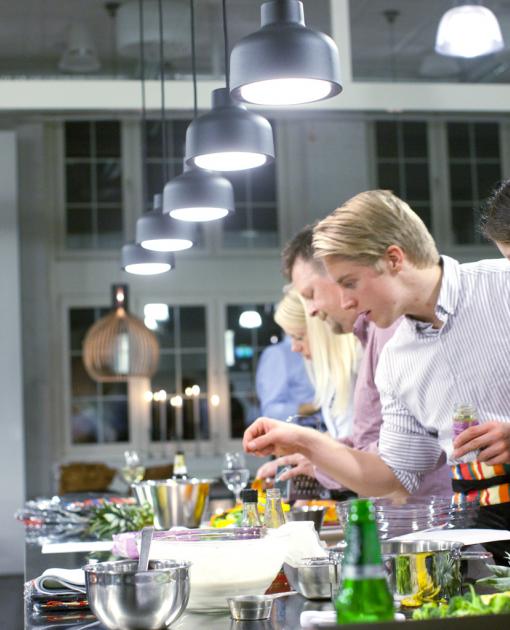
The new food studio opens in Mölndal, Sweden
In 2011 the “Food Studio” in Krokslätt, Mölndal, is successfully launched as a creative meeting place where cooking as well as seminars and discussions with customers and partners can take place. The food studio is a cooperation between our World Foods & Flavouring and Industrial Flavouring divisions.
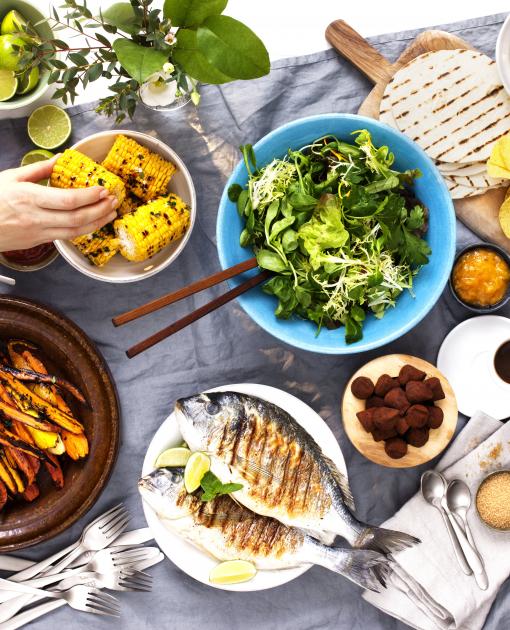
2012
A common corporate identity and culture
In 2012 Paulig Group embarks on a new journey after years of expansion. As the group and business has grown over the years it has become increasingly clear that also the company behind the successful brands needs to step forward and bring the organisation together.
In March 2012 a new common corporate identity, based on a solid platform of values and guidelines, is launched. A new corporate logotype is introduced together with our new core message and tagline – Exploring Great Taste – which underpin the fact that everything we do relates to our passion for rich coffee, good food and irresistible flavours. Our corporate identity ties us together as a group – our brands remain the same towards customers and consumers!
Our values:
Stay Curious
Strive for Excellence
Grow Together
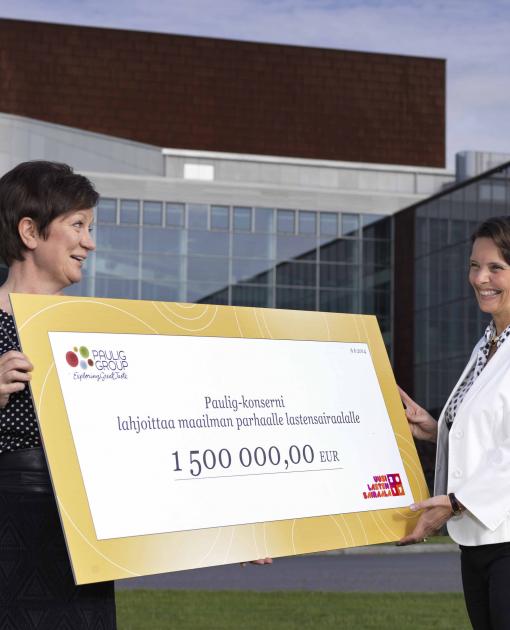
2014
In Finland it was once again time to come together as a nation. An investigation in 2011 showed that there was an urgent need for a new children’s hospital. The children's clinic's premises from the 1940s did not meet the needs anymore. It was too small, and also fell apart. The clinic's small patients and the staff who care for them needed a new hospital.
The Support Association for the New Children's Hospital 2017 launched a collection to build a new national Children’s Hospital. Paulig, who for more than 100 years had been part of Finns' everyday life, decided in 2014 to donate 1.5 million euros to this project.
The goal was to collect 30 million euros of companies and individuals. The collection brought about more than 40 million euros. The hospital started its operations in the autumn of 2018.
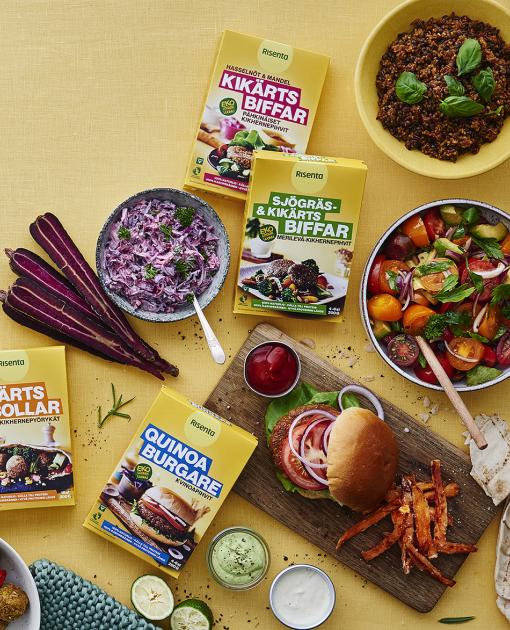
2015
Interest in healthy and healthy foods is one of the fastest growing consumer trends. Paulig extends its business to this category by acquiring Risenta AB.
Risenta was founded in Sweden in 1940 with the business idea to offer healthy and healthy food to people who want to eat and live healthy.
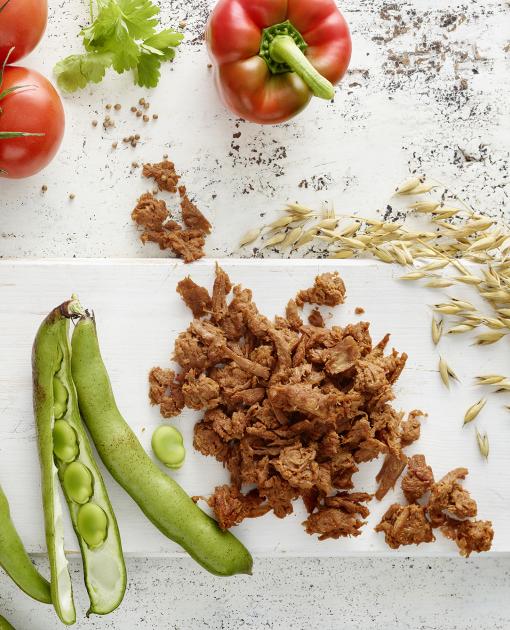
2016
Pulled Oats, the most widely reviewed food innovation in Finland, takes the next step forward when Paulig acquires the majority of the shares (51%) in Gold & Green Foods. Paulig's involvement in the development of the business activities is a natural continuation of the group's investments in natural and healthy foods.
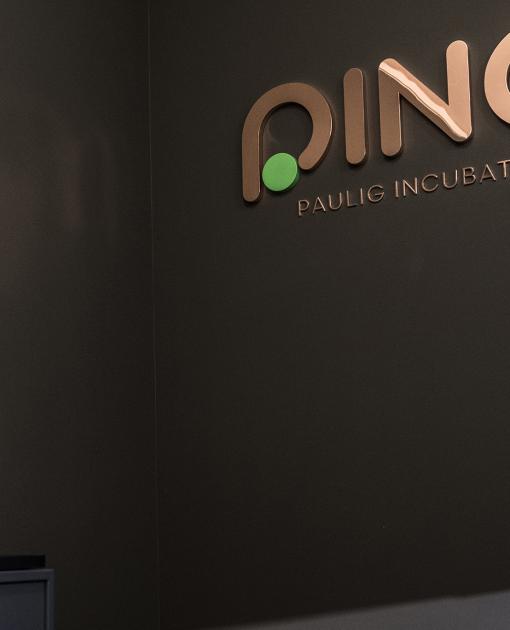
2018
Paulig sets sight on 2030 by establishing an incubator for future innovations and ventures. PINC is a green-house for radical innovation in and around topics of the food industry. Its physical location is in the heart of Stockholm, in the A House a centre for creative development with a focus on food, fashion and media.